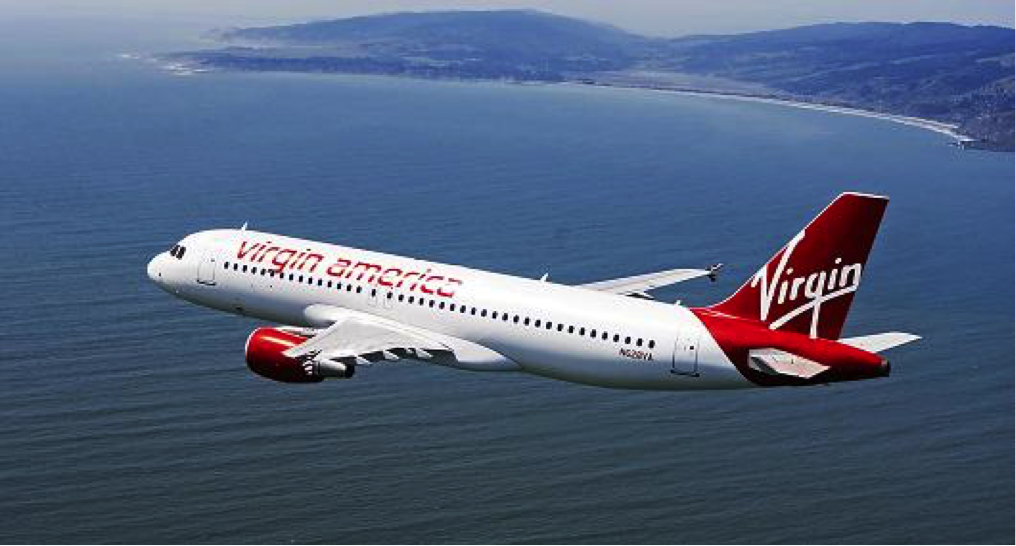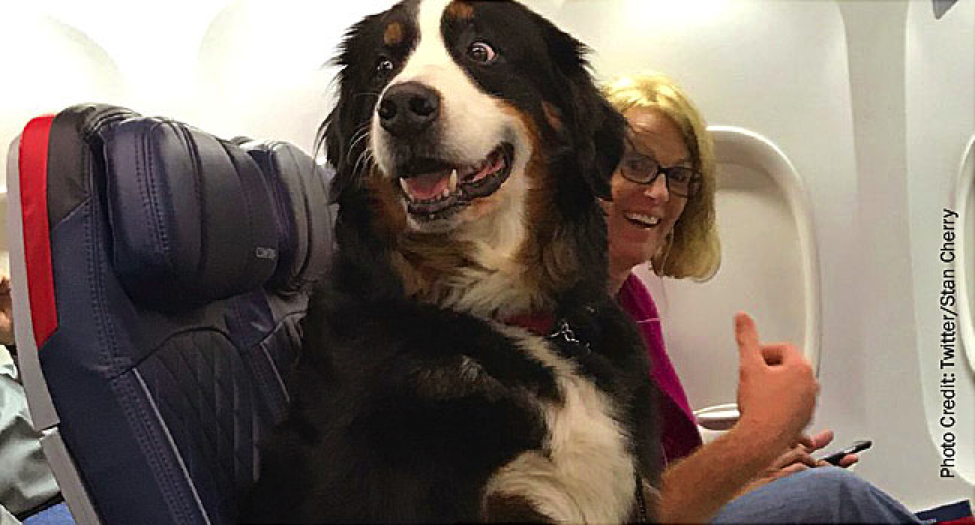
As liberating as visiting a new place can be, traveling – especially via air, can be particularly overwhelming. For people who rely for help on their service animals or have ESA’s (Emotional Support Animals), flying without their trusted companion is a difficult task, to say the least. Luckily, a large number of airline carriers, in the United States and beyond, facilitate their fliers by allowing them to bring on board their furry friends through strict, but extensive, pet policies and requirements.
One such pet friendly airline is Virgin America.
Here’s an in-depth look at Virgin America’s pet policy to evaluate their services for people who need to fly, to and from places, with their ESA’s accompanying them.
Virgin America’s Pet Policy Breakdown
Virgin America is often touted as one of the better, pet friendly airline carriers out there. However, as with every other airline, there are certain rules and requirements which need to be followed in case a passenger wishes to bring on board their pets, service animals, or emotional support animals.
Virgin America has a standardized policy for both service animals and emotional support animals, respectively.
For service animals, a proof of animal’s status is mandatory before the flight. The passenger can provide the following as proof:
- A harness as well as a harness tag with appropriate markings worn by the animal
- An identification card
- A credible verbal statement of the passenger
For emotional support animals, the airline requires a certified ESA documentation – either a letter written on a professional’s official letterhead or a form filled out and signed by a licensed professional in order to assure the airline of the validity of the ESA you wish to bring on board. This documentation may either be provided by a licensed medical or mental health professional such as a psychiatrist or psychologist or a clinical social worker.
Want To Bring Your Pet On The Plane? Register Your ESA Now!
The ESA letter must be current and less than a year old on the day of the flight. It should include relevant details about the mental health disability explaining the reason for the ESA accompanying the
passenger, and proof of treatment for the passenger under the supervision of the documentation provider.
Apart from these, the other pre-requisites for service animals and ESA’s to travel through Virgin Airlines include:
- The animal must be well behaved
- The animal must not pose any risk or cause unnecessary inconvenience to other passengers or airline staff
- The ESA cannot be given a seat and must occupy only the designated space provided within the aircraft
- The pet cannot block or restrict access to an emergency exit or aisle
- Service animals or ESA are, with proper proof of identification allowed within the cabin without a pet carrier
- If all pre-requisites are met, the service animal or ESA may travel without travel fee or any other additional charges
- Animals which may pose a threat to public, passenger, or personnel safety are not admissible on board the aircraft. These animals include reptiles such as snakes, spiders, or rodents of any category.
- For passengers traveling to and from Hawaii, there is a need to acquire an up to date health certificate that states a full assessment of the pet’s health. This health certificate must not have been issued more than two weeks prior to the date of flight. It is only valid for 30 days – if the return date from the Hawaiian destination extends beyond the 30 day period, a new health certificate may need to be issued before the flight.



Tips to Fly Safely With Your Pet or ESA through Virgin America
If you’re planning to fly via Virgin America with your service pet or ESA, there are a few things that can greatly facilitate your travel, allowing you to enjoy a safer, smoother journey.
Arrange for an ESA Letter
The ESA letter not only helps waive off any regulatory or travel fee it also ensures that you are never separated from your most trusted companion in your travels.
Before you book your flight, it’s advisable to arrange for an official ESA certification or letter stating the need for an ESA for traveling purposes. The letter is provided only by a licensed professional after complete evaluation of your condition. Apply for the letter a minimum of 14 days prior to your flight.
Call The Airline to Confirm Their Pre-Requisites
Even if you are a frequent flier, pre-requisites and policies are subject to change for every airline. Before traveling, it is highly recommended that you call the airline initially to discuss the necessary conditions, as well as to request any special seating adjustment, should it be required.
Come Prepared
To ensure stress free flying with your pet, it’s best to come prepared beforehand in order to maintain your pet’s comfort during the flight. We’re talking blankets, toys, a collapsible bowl for water, pee pads or travel diapers and motion sickness medicine as needed.
Exercise Your Pet Before The Flight
It’s highly recommended that you exercise your pet before the flight. Pets, especially dogs get agitated and unnecessarily excited when they don’t get their required movement space. Be sure to give them ample exercise and freedom before the flight so that they’re somewhat calm and comfortable in the duration.
Avoid New Treats For Your Pet
If you intend to fly with a service animal or an ESA, it’s inadvisable to introduce them to new treats right before traveling. You cannot guarantee how your pet may react to a new treat, so it’s best to avoid giving them anything they’re not comfortable before flying.
Don’t Feed Your ESA Right Before the Flight
To avoid any mishaps on the flight, it’s advisable not to feed your ESA for a minimum of a couple of hours before the flight. Withhold food and water from your pet right before the flight, only offering small amounts of ice or water during the flight, in order to avoid dehydration.